Abstract
A follow-up study covering two years after a closed head injury was carried out on a group of 57 young males. Their reaction time was tested on both a simple and a four choice visual reaction task. The group was divided into three subgroups according to length of unconsciousness after the injury. Reaction time discriminated between subgroups, and a highly significant improvement during follow-up was shown. Choice reaction time discriminated better and continued to do so throughout the whole period of follow-up. Some relations of reaction time with clinical variables and outcome are discussed. The choice reaction in particular seems to have some value for monitoring recovery and predicting final outcome.
Full text
PDF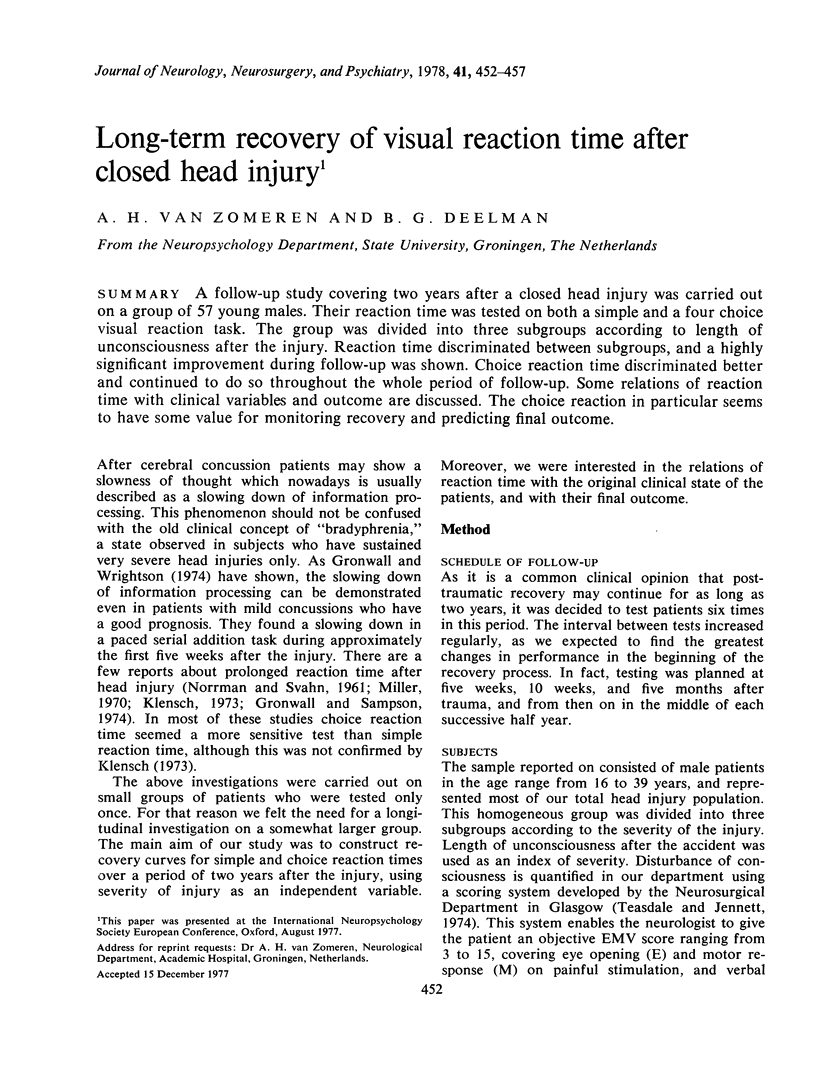
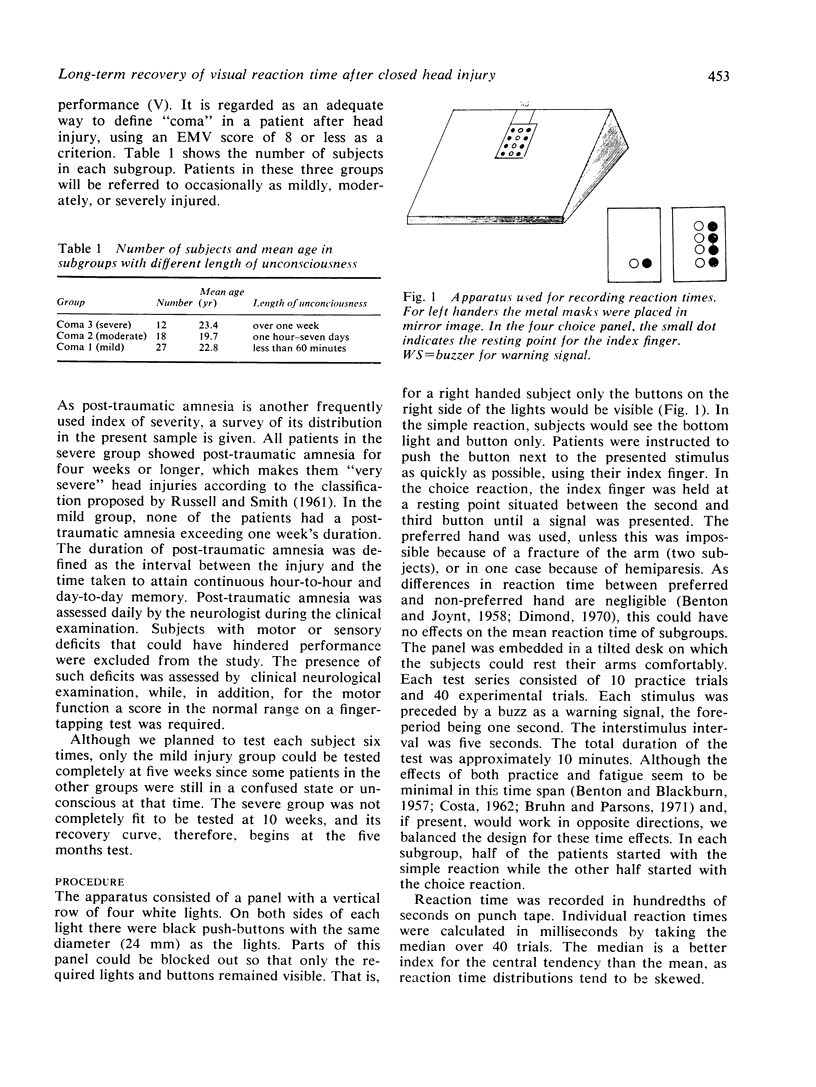

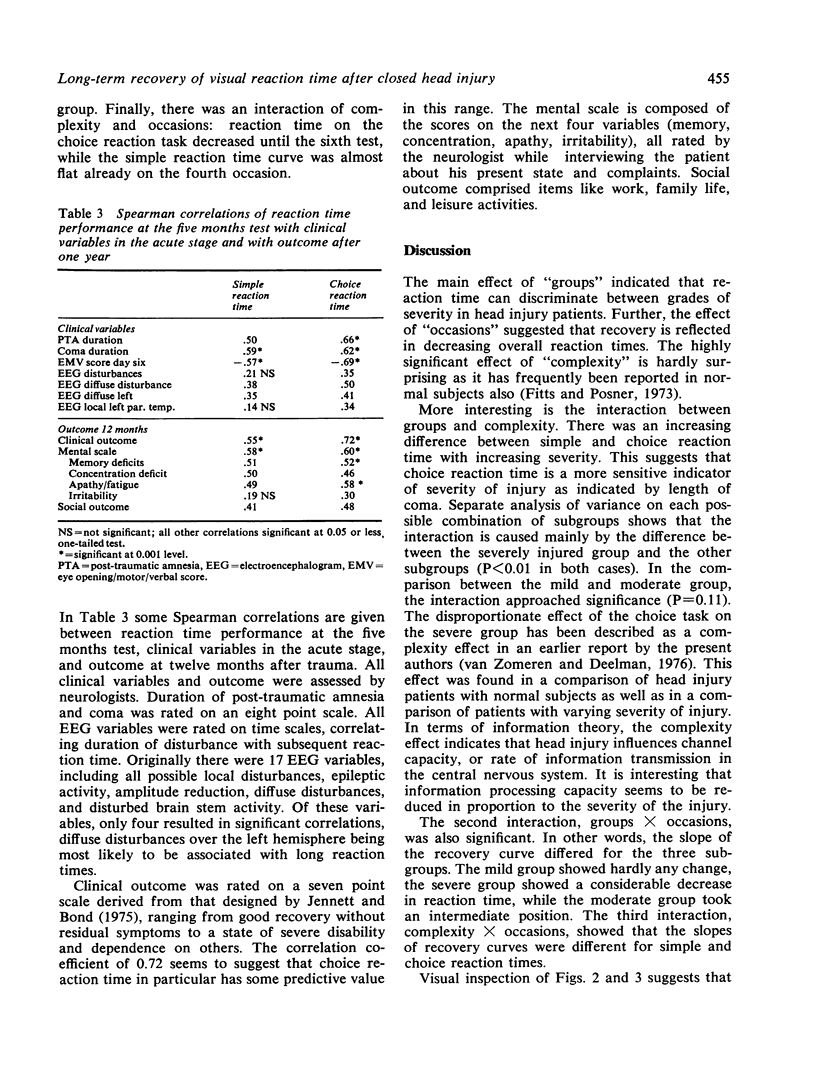
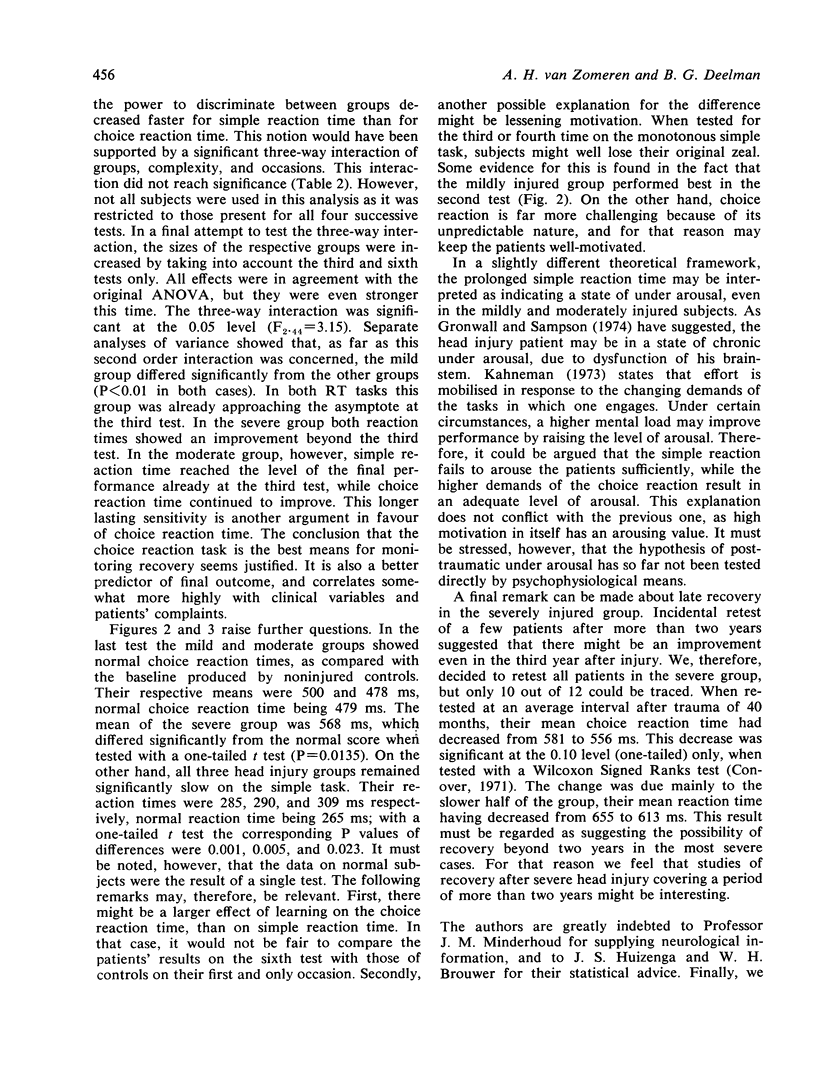
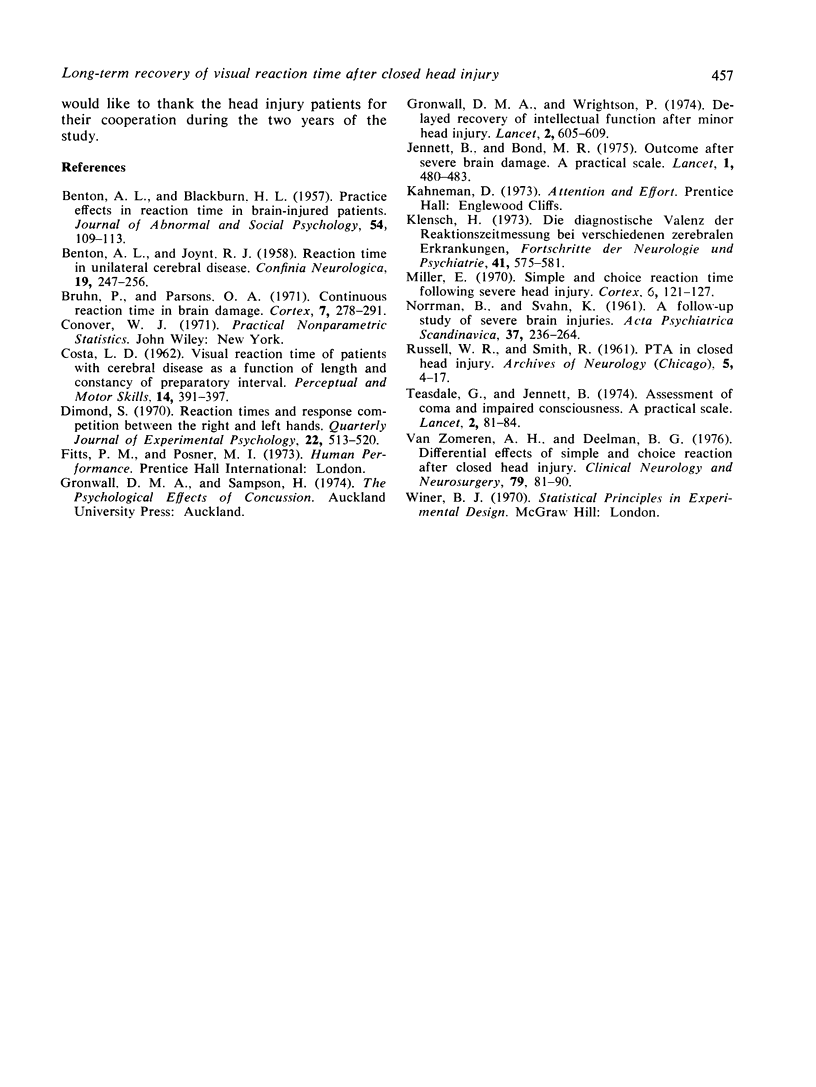
Selected References
These references are in PubMed. This may not be the complete list of references from this article.
- BENTON A. L., BLACKBURN H. L. Practice effects in reaction-time tasks in brain-injured patients. J Abnorm Psychol. 1957 Jan;54(1):109–113. doi: 10.1037/h0047176. [DOI] [PubMed] [Google Scholar]
- BENTON A. L., JOYNT R. J. Reaction time in unilateral cerebral disease. Confin Neurol. 1959;19(3):247–256. doi: 10.1159/000104993. [DOI] [PubMed] [Google Scholar]
- Bruhn P., Parsons O. A. Continuous reaction time in brain damage. Cortex. 1971 Sep;7(3):278–291. doi: 10.1016/s0010-9452(71)80006-0. [DOI] [PubMed] [Google Scholar]
- COSTA L. D. Visual reaction time of patients with cerebral disease as a function of length and constancy of preparatory interval. Percept Mot Skills. 1962 Jun;14:391–397. doi: 10.2466/pms.1962.14.3.391. [DOI] [PubMed] [Google Scholar]
- Dimond S. Reaction times and response competition between the right and left hands. Q J Exp Psychol. 1970 Aug;22(3):513–520. doi: 10.1080/14640747008401928. [DOI] [PubMed] [Google Scholar]
- Gronwall D., Wrightson P. Delayed recovery of intellectual function after minor head injury. Lancet. 1974 Sep 14;2(7881):605–609. doi: 10.1016/s0140-6736(74)91939-4. [DOI] [PubMed] [Google Scholar]
- Jennett B., Bond M. Assessment of outcome after severe brain damage. Lancet. 1975 Mar 1;1(7905):480–484. doi: 10.1016/s0140-6736(75)92830-5. [DOI] [PubMed] [Google Scholar]
- Klensch H. Die diagnostische Valenz der Reaktionszeitmessung bei verschiedenen zerebralen Erkrankungen. Fortschr Neurol Psychiatr Grenzgeb. 1973 Oct;41(10):575–581. [PubMed] [Google Scholar]
- Miller E. Simple and choice reaction time following severe head injury. Cortex. 1970 Mar;6(1):121–127. doi: 10.1016/s0010-9452(70)80040-5. [DOI] [PubMed] [Google Scholar]
- NORRMAN B., SVAHN K. A follow-up study of severe brain injuries. Acta Psychiatr Scand. 1961;37:236–264. doi: 10.1111/j.1600-0447.1961.tb07359.x. [DOI] [PubMed] [Google Scholar]
- RUSSELL W. R., SMITH A. Post-traumatic amnesia in closed head injury. Arch Neurol. 1961 Jul;5:4–17. doi: 10.1001/archneur.1961.00450130006002. [DOI] [PubMed] [Google Scholar]
- Teasdale G., Jennett B. Assessment of coma and impaired consciousness. A practical scale. Lancet. 1974 Jul 13;2(7872):81–84. doi: 10.1016/s0140-6736(74)91639-0. [DOI] [PubMed] [Google Scholar]
- van Zomeren A. H., Deelman B. G. Differential effects of simple and choice reaction after closed head injury. Clin Neurol Neurosurg. 1976;79(2):81–90. doi: 10.1016/0303-8467(76)90001-9. [DOI] [PubMed] [Google Scholar]


